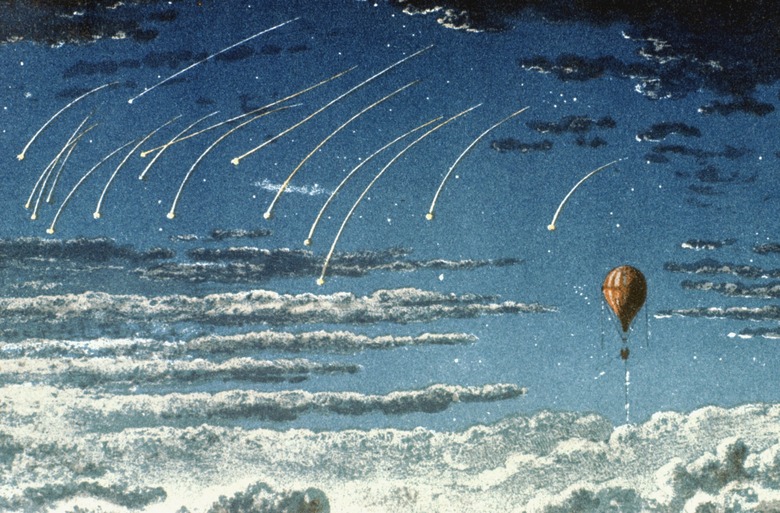Famous Meteors
Throughout Earth's history, the peoples of many civilizations have witnessed and recorded the fiery paths of meteors across the skies. We now know that as celestial objects pass through Earth's atmosphere, friction heats them until they give off a distinctive, supernatural glow. Large meteors that hit the Earth can produce explosions equivalent to thousands of nuclear bombs. Smaller meteors have produced local damage to property or vehicles. In the 19th and 20th centuries, several notable meteorites have left their marks on men and nature.
Murchison Meteorite
Murchison Meteorite
On September 28, 1969, a meteor exploded over the town of Murchison in Australia. The explosion left smoke rings in the air and left 700 kilograms (1,543 lbs) of meteorite debris scattered across 33-square-kilometer (20-square-mile) area. Analysis measured the age of the meteorites to be older than the solar system. Remarkably, the cosmic rocks contained molecules such as amino acids, which are essential to life. This was the first time organic chemicals had been found in a meteorite. The discovery started a debate on the origin of life, which continues today.
Allende Meteorite
Allende Meteorite
On February 8, 1969, Mexicans in the state of Chihuahua saw a fireball plummet to the ground. The meteor exploded, producing thousands of fragments over a an area of 320 square kilometers (200 square miles). NASA analyzed the meteor the same year it fell to Earth. Scientists found bits of calcium and aluminum embedded in the meteorite. NASA scientists thought these bits of metal were some of the first pieces of solid matter formed in the earliest times of our solar system.
The Allende meteorite continues to reveal its secrets. In June 2012, Caltech scientists studying the Allende meteorite found a completely new type of mineral, never before seen on Earth. The material, named Panguite, contained titanium, scandium, aluminum, magnesium, zirconium, and calcium.
Peekskill Meteorite
Peekskill Meteorite
Thousands of people across the east coast of the United States watched as the Peekskill meteor blazed over high school football games and fast food joints on October 9, 1992. At least 16 witnesses captured the event on video, making it one of the best-documented meteor strikes in history.
The meteor crashed into a cherry-red Chevy Malibu at the city of Peekskill, New York. The space rock knocked a hole through the trunk, just in front of the right-rear bumper. The cause: a 12.4-kilogram (27-pound) meteorite, roughly the size and shape of a bowling ball. The meteorite's remains were removed from the car by Michelle Knapp, who later sold them for $69,000.
Orgueil Meteorite
Orgueil Meteorite
When a meteor crashed in southern France as a fireball on May 14, 1864, about 20 meteorite fragments fell close to Orgueil, France. Many scientists have studied these fragments during the past 150 years. The most famous studies were carried out by Richard Hoover, a NASA scientist, who claimed the Orgueil meteorite included fossilized, alien micro-organisms. He observed that structures within the meteorite seemed to resemble primitive single-celled organisms found on Earth. Today, most scientists remain unconvinced of Hoover's findings, believing it is more likely that the structures he saw in the Orgueil meteorite are naturally occurring minerals.
Cite This Article
MLA
Markings, Samuel. "Famous Meteors" sciencing.com, https://www.sciencing.com/famous-meteors-4875/. 24 April 2017.
APA
Markings, Samuel. (2017, April 24). Famous Meteors. sciencing.com. Retrieved from https://www.sciencing.com/famous-meteors-4875/
Chicago
Markings, Samuel. Famous Meteors last modified August 30, 2022. https://www.sciencing.com/famous-meteors-4875/
